
 [Candobetter.net Editor: This submission was made available as a pdf attachment to an earlier article. It is such a useful document that we have converted the pdf version to a web document for easier reading.]
[Candobetter.net Editor: This submission was made available as a pdf attachment to an earlier article. It is such a useful document that we have converted the pdf version to a web document for easier reading.]
Submission in response to the issues paper on Managing Australia’s Migrant Intake
Peter G Cook, MA PhD
2 February 2018
It is commendable that the Australian government, through the Department of Home Affairs, is seeking to broaden its consultation with the Australian public about the future shape of Australia’s migrant intake. This is consistent with Recommendation 3.1 of the recent Productivity Commission report [1] , Migrant Intake into Australia, that:
The Australian Government should:
• develop and articulate a population policy to be published with the intergenerational report
• specify that the primary objective of immigration and the Government’s population policy is to maximise the economic, social and environmental wellbeing of the Australian community (existing Australian citizens and permanent residents) and their future offspring.
Australia’s immigration and population policy should be better informed through:
• genuine community engagement
• a broad range of evidence on the economic, social and environmental impacts of immigration and population growth on the wellbeing of the Australian community
• a published five yearly review of Australia’s population policy.
The Australian Government should calibrate the size of the annual immigration intake to be consistent with its population policy objectives.
It is to be hoped that this current Departmental consultation is just the first step towards implementation of the remaining parts of the Productivity Commission’s Recommendation 3.1. In particular, towards the ongoing development of an explicit population policy which would draw upon a wide range of input and evidence from government, the community, other stakeholders and experts. As the Commission points out in Finding 3.1, Australia has low and stable rates of natural population growth, therefore “decisions about the size of the permanent and temporary immigration intake amount to a de facto population policy.”
If migrant intake planning is not integrated with a broader, systematic and explicit focus on population policy, then planning for migrant intake is not doing justice to the great importance which this matter holds for the national interest.
The following brief comments may be of interest in the Department’s consideration of the questions which it has raised in the issues paper. I have organized the comments under some of the relevant questions posed in the issues paper. I draw considerably upon the Productivity Commission’s report because this is a major work of synthesis which draws upon a large range of expert evidence and community input. While I do not necessarily agree with all of the Commission’s conclusions, it is vital that this report be closely studied within government and that its major findings and recommendations (eg Recommendation 3.1) be acted upon.
Underlying my comments throughout is the following policy prescription which represents my viewpoint, and which I commend to the Department:
Australia must stabilize its population at less than 30 million people. This can be done through a gradual tapering of our net overseas migration towards zero. This could be initiated by an immediate reduction, by some twenty thousand, of the annual migrant intake from its current level of 190,000. Further reductions could be implemented over time to a point where intake is approximately equal to annual emigration – previous estimates have suggested this could be approx. 70,000 places, which is also considered to be around the historical 20th century average annual intake.
1. What factors are important to consider in planning the Migration Program over the next five years? Would those factors change over the next 10 or 15 years? If so, how?
If by ‘factors’ it is meant something like ‘goals’ or ‘criteria’ for assessing what size the migrant intake should be, then the key factors are:
- The quality of life (well-being) of the Australian people, in particular a quality of life that is not continually being degraded as it is presently by increasing congestion and deteriorating infrastructure in our main cities, due to high levels of immigration-fuelled population growth.
- The price of housing is surely a key factor for both the quality of life and standard of living of Australians. In its Finding 7.1 the Productivity Commission reached the unambiguous conclusion that: “High rates of immigration put upward pressure on land and housing prices in Australia’s largest cities. Upward pressures are exacerbated by the persistent failure of successive state, territory and local governments to implement sound urban planning and zoning policies.”
- The continuing destruction of ecosystems (habitat for human and non-human creatures) and agricultural land in Australia’s urban fringes, caused by urban sprawl. This may not necessarily be caused directly by immigrants but it is caused by immigration-fuelled population growth. This destruction needs to be much more closely controlled, if not called to a complete halt.
- The alternative to continual expansion of housing outwards into peri-urban areas – namely inappropriate infill projects that destroy traditional urban and suburban neighbourhoods – is equally unacceptable. For a perfect example of such ugly and inappropriate inner city development, look no further than the inner suburbs of Brisbane such as Newstead, Fortitude Valley and West End, where 20 or 30 story (and higher) high rise apartments are being packed together like so many upended and oversized shipping containers. Urban infill must also be reduced and much more tightly controlled for aesthetic, amenity and sustainability reasons.
- The Productivity Commission report also noted that: “Population growth also increases the pressure on environmental services where these are major inputs into the provision of a range of water, sewerage and sanitation services. These too can be resolved by investing in more technical solutions, adding to the cost of living.”
For each of the above criteria, the indicators are going backwards: more congestion, more crowded amenities, higher housing prices in the biggest cities, unsightly and shabbily built high rises, higher costs for environmental services and, finally, destruction of biodiversity and vital agricultural land.
The Productivity Commission report clearly recognized the population pressures that Australia’s current high levels of immigration places upon our cities and our environment, and concluded that “Without substantial change in policy settings and the effectiveness of government action, high levels of population growth will impose adverse impacts on the quality of Australia’s environment.” (p. 333)
2. How can we plan migration to ensure it is balanced to manage the impact on the economy, society, infrastructure and the environment in a sustainable way?
At the risk of being repetitive, the only hope of ‘planning migration’ to manage the impacts mentioned, is to make the planning part of the development of a population policy which is well-integrated into the machinery of government at all levels in Australia. The purpose of a population policy is to enable the setting of objectives for Australia’s future, and in particular:
(a) What is the ‘absorptive capacity’ (to use the Productivity Commission’s phrase) of our natural environment and social infrastructure to accommodate further population growth?
(b) what should be the size of our population in order to keep at or (preferably) well below this absorptive capacity, and still enable a reasonable level of well-being for all of us human inhabitants along with all the other creatures with whom we share this planet?
It is probably obvious, but perhaps still should be stated, that population policy assumes that the size of a country’s population is, in fact, under the control of the inhabitants of that country, at least to some degree. This would seem to be a reasonable assumption, particularly in the case of Australia, where the level of population growth can be altered by a simple administrative decision made annually – namely what is going to be the prescribed migrant intake for the coming year. This decision need not cause the sort of angst about interfering in personal reproductive decisions that might be the case if the decision was about trying to influence the rate of natural population increase in Australia.
And yet, despite this seeming to be a no-brainer, governments have, in the main, shied away from developing population policy. In doing so they have committed Australia to a default policy of unending population increase, driven overwhelmingly by those special interests who can clamour the loudest to seek the spoils from, for example, the unending subdivisions of land and construction of new ‘development’ required to meet new population-driven demand.
By refusing to entertain discussion about possible constraints to unending population increase, there is an absurd scenario where Australia could continue growing at the same rate of increase until it reaches 100 million people, or 200 million people, and beyond. Although there are some players (eg wealthy property developer Harry Triguboff) who actually hope for this scenario of not merely a ‘big Australia’ but a ‘gigantic Australia’, is this scenario actually what the government, or indeed most of the Australian people, wants? If not, then wouldn’t it be wise to develop a population policy which explores what the Australian community does want?
This is where the Productivity Commission’s report makes a critical intervention in calling for an injection of democracy into the whole area of migration planning and population policy:
…decisions on the migrant intake should be part of a transparent population policy based on well-informed engagement with the Australian community so that the policy reflects the preferences of the broader community as well as businesses. (Migrant Intake into Australia, p. 244)
Not only do I totally concur with the Commission’s assessment on this point, but also with its scepticism that the current operation of our parliamentary democracy is serving us well when it comes to migration and population issues:
Consistent with a large body of political economy literature, the opinion of many participants … is that Australia’s system of parliamentary democracy has an in-built predisposition towards ‘hearing’ from certain stakeholders (who typically have a vested interest and are well organised). In contrast, members of parliament are less likely to ‘hear’ from affected constituents for whom the effect of a policy change is individually small, but is large when added up over many constituents. The debate surrounding tariff reductions is one historical example of this type of imbalance. Debates surrounding immigration and population policy may be subject to a similar imbalance. (p. 106)
The Commission goes further, to politely highlight the fact that the ‘incentives’ for the various stakeholders are not ‘aligned’. There is a key difference between the incentives of:
businesses who benefit from the increased supply of labour and, with this, demand for their goods and services, and [the incentives of] members of the community, as reflected in the large number of submissions raising concerns about house prices, congestion, and other environmental impacts. Even if all of the concerns raised are not proven, these views do need to be taken into account in setting the migrant intake. (p. 243)
Had it been published at the time, I wonder whether the Commission could also have made good use of the cogent arguments and evidence presented by Cameron Murray and Paul Frijters in their book Game of Mates (2017) [2] , which lifts the lid on the way the decisions of various levels of government are used to distribute the spoils of property development and other industries to those ‘in the know’. This is not necessarily by means of overt, legally definable corruption (although it can be) but more a revolving door system of mutual back-rubbing in which everyone in the know wins a prize.
So in summary to answer question 2: For all of the above reasons, particularly dominance by large special interests and the existence of decision making processes at all levels of government that are lubricated by the circulation of rewards to a limited number of insider ‘players’, the Commission’s recommendation 3.1 must be implemented in full. That is the only hope we have to ‘plan migration’ to ensure it is balanced to manage the impact on the economy, society, infrastructure and the environment in a sustainable way.
3. How can governments, industries and communities help ensure infrastructure and services best support migration as well as the broader population?
i. Do you think migration is currently being planned with a sufficient view of Australia’s long-term needs?
ii. If not, how could these considerations be better incorporated?
In short, the answer to (i) is a definite no. But to go back a little, the phrasing of the main part of question 3 is a little strange in the way it seems to put support for migration ahead of the general population, when you would think it should be the other way round.
Be that as it may, we can draw again on the Commission’s report to highlight that Australia’s infrastructure and services are patently not keeping up with increasing demand generated in large part from immigration-fuelled population growth.
The Commission issues a number of devastating judgements on this matter, including its Finding 7.1 (above) which refers to “the persistent failure of successive state, territory and local governments to implement sound urban planning and zoning policies.” The Commission also notes that, “[a]s past Commission reports have identified, state, territory and local governments have not always distinguished themselves in managing the environmental implications of population growth.” (p. 239)
This is a matter of obvious frustration for the Commission, which patiently (re)explains that:
..it is important that there are appropriate coordination and governance
arrangements in place to help deliver better planning outcomes. Although as has been noted previously) coordination is strong in some planning areas, it is weak in others (PC 2011f). The Commission enunciated principles of good governance — transparency, accountability and responsibility, and capability — as part of its inquiry into public infrastructure (PC 2014c). The recommendations made by that inquiry remain valid, and in view of the population pressures created by immigration even more important. High immigration rates only reinforces the need to get planning right, and attention to the ability of cities to absorb immigrants should be part of the consideration in determining the migrant intake. (p.241)
The Commission tends to have a predilection for market-based solutions for many of these planning issues – something of which the present author is not so readily persuaded – but it is interesting that the Commission also seems sympathetic to a proposal that:
clear and enforced outcome-based codes and standards that apply suburb wide and can be assessed by a builder, surveyor or consultant should replace the more lengthy and often discretionary local government processes or approval. For this to work, buildings that do not comply need to be forced to do so or be demolished at the expense of those who assessed the building as compliant. Codes would also need to cover all the issues that existing residents care about, such as maintenance of privacy, limiting overshadowing, and traffic management. (p. 230, emphasis added)
Such is the level of frustration that the Commission seems prepared to entertain some rather drastic measures.
To summarise, it is clear that there are multiple failures in Australia’s ability to cope with the immigration-fuelled population growth that is thrust upon this country annually by administrative fiat. The Commission has unambiguously called out this failure of governance and planning in its Migrant Intake report.
The question then is, what to do about it? One idea which comes to mind is to say, ‘well, if immigration-fuelled population growth is adding to the stresses and strains on Australia’s environment, services and infrastructure, and if this is being exacerbated due to failed planning and governance processes – then perhaps it would be a good idea to slow down the rate of population increase by reducing the annual migrant intake. Perhaps this could be done just for a few years to give us some breathing space while we embark on institutional and planning reform, including population policy development, which will greatly increase our adaptive capacity, improve the quality of life for the vast majority of us, and give the Australian community some sense of ownership over the direction in which the country is heading.’
Such a course of action could be undertaken irrespective of whether one thinks that, in the longer run, Australia could or should end up with a population of 50 million or even 100 or 200 million (and so this temporary reduction could be seen as ‘preparation for the deluge’) – or whether one sees this action as the beginning a more prolonged reduction in migrant intake to eventually reach a stabilised level of population.
It could also be done, dare it be said, with an eye to various political side-benefits which have to do with the apparently growing concern within the Australian community about the impact of immigration upon social cohesion.[3] Although this topic is not a focus of the current submission, there is no doubt a significant segment, if not a majority, of the Australian community with such concerns, including a great number on the conservative side of politics. Depending upon how they are framed (ie in non-racist terms), these concerns should not be automatically dismissed outright and without careful consideration – social cohesion is indeed an important societal goal.
And yet, for all the apparent merits of this simple idea to significantly reduce the migrant intake just for a few years, one has the feeling that this idea would not be able to ‘get up’, as they say. Why is that? It has a lot to do with the problems or our democracy highlighted in the previous section: The special interests are indeed very ‘special’, and the mates are indeed very good mates with the other players in the rewards game.
4. Does the current size and balance of the Migration Program reflect the economic and social needs of Australia?
i. What information do you need about migration? Would information about future migration planning levels numbers assist you?
Probably enough has been said already in order for the reader to accurately predict that my answer to question 4 is a categorical no – and some of the reasons for this should be clear from the above.
In terms of question 4 (i), there is very definitely some extra information that would assist me and the Australian community to have more informed discussion about Australia’s (nascent) population policy.
One of these, highlighted in the Commission’s report, is the need for ongoing systematic research into Australia’s ‘absorptive capacity’, which the Commission defines as:
the capacity of the market and non-market sectors to respond to the increased demand for goods and services induced by immigration and population growth. A sustainable rate of immigration (and population growth) is one that gives all residents the opportunity to engage productively in the economy and the community. It is also a rate that does not put undue burden on the environment to the extent that it undermines the wellbeing of existing and future generations. However, a rate of immigration that is defined as ‘sustainable’ may not necessarily be one that maximises community-wide wellbeing. (p. 3, emphasis added)
In one of Commission’s concluding chapters, on long-term impacts of migrant intake, it makes the following interesting observations:
A positive rate of immigration that is within Australia’s absorptive capacity and oriented towards young and skilled immigrants is likely to deliver net benefits to the Australian community over the long term.
However, there are various weaknesses inherent in current processes surrounding immigration policy decision making, particularly in terms of their ability to take into account broader and longer-term considerations (chapter 3 and finding3.1).
Taken together, these issues raise questions as to whether, without changes to increase Australia’s absorptive capacity, the annual intake (which is currently at historically high levels) is consistent with achieving a population that at least sustains (and over time maximises) the wellbeing of the Australian community. (p. 367, emphasis added)
In that context, I support the Commission’s very important Recommendation 10.1 of the Migrant Intake report:
The Australian Government should fund the Commonwealth Scientific and Industrial Research Organisation (CSIRO) to publish projections of the likely impact of varying rates of population growth on the built and natural environment. This analysis could form part of the CSIRO’s National Outlook publication.
The release of this analysis should be synchronised with the release of the Australian Government’s Intergenerational Report
It is only proper that this important task be undertaken by a respected and independent body such as the CSIRO. This is despite there being some questions raised about the plausibility of certain scenarios described in its recent National Outlook project.[4] However, such issues can be further reviewed during CSIRO’s continuing work on this matter.
There is also clearly a need for ongoing studies of public attitudes and values relating to population growth, immigration, and the desired future for Australia. It would be preferable if there were funding for ongoing (eg annual or two-yearly) tracking studies on these topics.
5. How could the permanent Migration Program be more responsive to global migration trends, including the rise of temporary migration?
First of all, let it be said that there will never be a shortage of people wanting to migrate to Australia. National pride aside, there can be no doubt we have a quality of life that is second to none. The challenge is that such quality of life is deteriorating due in part to immigration-fuelled population growth.
The interest in migrating to Australia can be only expected to increase during the remainder of this century. This will include more pressure for temporary migration.
Many experts point to a series of inter-related ecological and energy problems (including of course climate change) which are intensifying on a global basis and multiplied by global population increase to 9 or 10 billion (or more) before the end of this century. This is very likely to make the 21st century an era characterised by slow or no growth and looming threats to the adequacy of global food supply due to increasing population, climate change and peak oil. It will definitely be an epoch of large and increasing movement of populations responding to war, social and environmental disruption, and the search for a better quality of life.
This future scenario may be unpalatable and does not square easily with the orderly world assumed by economic modelling or the short-term growth fix sought by politicians. No one can know the future exactly, but the above scenario is a very plausible one supported by an abundance of expert analysis. [5]
If such a scenario eventuates it can be fully expected that there will be immense pressure on Australia to further ‘open its borders’ to some degree or other. By all means we should offer a generous refugee quota and an even more generous, well-targeted foreign aid budget which aims to improve quality of life at source and thus obviating the need for people to migrate to new lands for the sake of survival or improvement.
However, I submit that no matter how much such global population pressures grow, we need to adhere to a goal of a stable population at no more than 30 million. That is the way to guarantee a rich, biodiverse, thriving Australian continent and an ongoing high quality of life.
NOTES
[1] Productivity Commission, Migrant Intake Into Australia, Inquiry Report No. 77, (2016) Canberra, Australia.
[2] Cameron Murray and Paul Frijters, Game of Mates, 2017. Published by the authors. www.gameofmates.com
[3] Betts, Katharine, and Bob Birrell. "Australian voters’ views on immigration policy." Australian Institute of Population Research (October 2017). http://tapri.org.au/wp-content/uploads/2016/04/TAPRI-survey-19-Oct-2017-final-3.pdf
[4] Alexander, Samuel, Jonathan Rutherford, and Joshua Floyd. "A Critique of the Australian National Outlook Decoupling Strategy: A ‘Limits to Growth’ Perspective." Ecological Economics 145 (2018): 10-17.
[5] See, for example: Moriarty, Patrick, and Damon Honnery. "Three futures: Nightmare, diversion, vision." World Futures (2017): 1-17; McBain, Bonnie, Manfred Lenzen, Mathis Wackernagel, and Glenn Albrecht. "How long can global ecological overshoot last?." Global and Planetary Change 155 (2017): 13-19; Ripple, William J., Christopher Wolf, Thomas M. Newsome, Mauro Galetti, Mohammed Alamgir, Eileen Crist, Mahmoud I. Mahmoud, William F. Laurance, and 15,364 scientist signatories from 184 countries. "World Scientists’ Warning to Humanity: A Second Notice." BioScience 67, no. 12 (2017): 1026-1028.




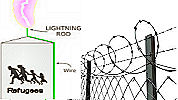 In case you haven’t heard, Canada has a border crisis on its hands. To all but the wilfully blind, the deceitful deniers and the dangerously delusional, it is blatantly evident that growing numbers of migrants are deliberately and flagrantly in contravention of Canadian border law and international treaties.
In case you haven’t heard, Canada has a border crisis on its hands. To all but the wilfully blind, the deceitful deniers and the dangerously delusional, it is blatantly evident that growing numbers of migrants are deliberately and flagrantly in contravention of Canadian border law and international treaties.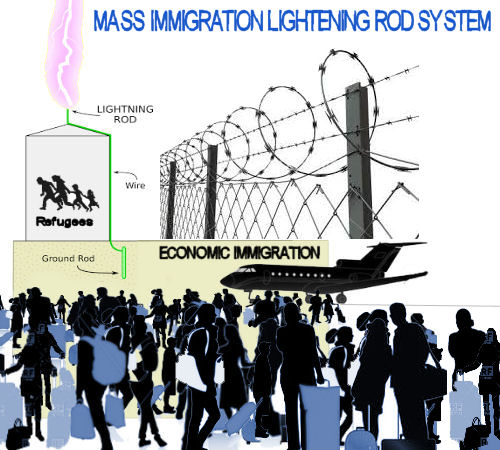
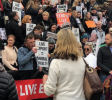 Towards 2000 people rallied on the morning of June 9, 2018 at 11.00 a.m to protest against live animal exports. The rally, organised by The Animal Justice Party and Animals Australia, attracted a very united crowd of men women and children horrified by the inevitable and intense pain and suffering inflicted on the hapless cargo of these ships no matter where they are headed.
Towards 2000 people rallied on the morning of June 9, 2018 at 11.00 a.m to protest against live animal exports. The rally, organised by The Animal Justice Party and Animals Australia, attracted a very united crowd of men women and children horrified by the inevitable and intense pain and suffering inflicted on the hapless cargo of these ships no matter where they are headed. 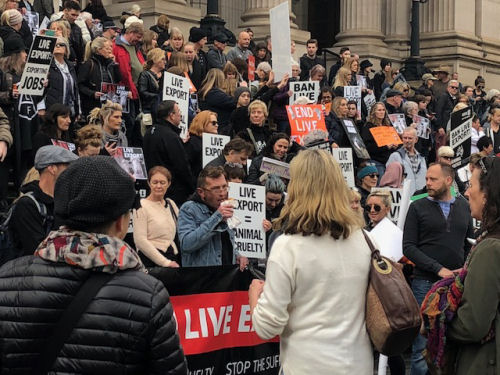
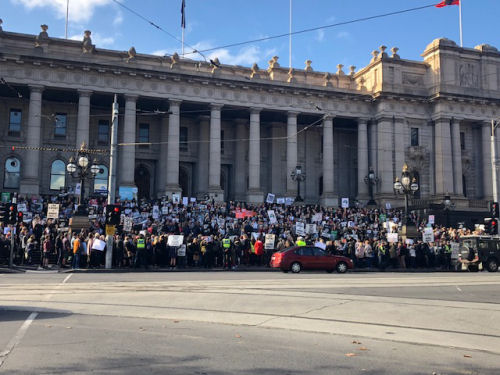
 The left has been hijacked by unwitting servants of the neo-liberal agenda.
The left has been hijacked by unwitting servants of the neo-liberal agenda.
 During the week commencing 12 March 2018 the Australian Broadcasting Corporation aired a number of programs on a Big Australia — the phrase used to encapsulate debates about the desirability of Australia’s rapid immigration-fuelled population growth. The specific programs included episodes of 4 Corners and QandA. Subsequently I submitted an official editorial complaint as per the ABC’s complaint-handling process. In the complaint I took care to refer in detail to the ABC’s own documented editorial standards. The ABC has acknowledged receipt of the complaint and will respond in writing in due course. As this response may take some time to provide, in the meantime I am
During the week commencing 12 March 2018 the Australian Broadcasting Corporation aired a number of programs on a Big Australia — the phrase used to encapsulate debates about the desirability of Australia’s rapid immigration-fuelled population growth. The specific programs included episodes of 4 Corners and QandA. Subsequently I submitted an official editorial complaint as per the ABC’s complaint-handling process. In the complaint I took care to refer in detail to the ABC’s own documented editorial standards. The ABC has acknowledged receipt of the complaint and will respond in writing in due course. As this response may take some time to provide, in the meantime I am 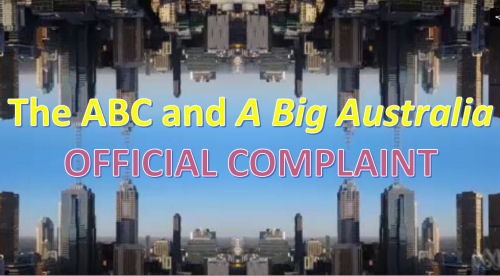

 Newly re-elected Hungarian Prime Minister Viktor Orban has declared Open Society Foundations, organisations funded by billionaire international currency speculator, George Soros, unwelcome in Hungary. I think he is right. Soros funds, in tens of billions of dollars, lots of Non Government Organisations (NGOs) around the world, many of them through his Open Society Foundations (OSF). Although these NGOs usually identify as 'charities' or 'grass roots' movements, all have in common the political aims of open borders and identity politics, a form of balkanisation. Backed by billions, not millions of dollars, this is the opposite of democracy. In Australia GetUp, which has links to the Australian Greens and the Labor Party, is one of the best known of Soros-linked foundations. (See
Newly re-elected Hungarian Prime Minister Viktor Orban has declared Open Society Foundations, organisations funded by billionaire international currency speculator, George Soros, unwelcome in Hungary. I think he is right. Soros funds, in tens of billions of dollars, lots of Non Government Organisations (NGOs) around the world, many of them through his Open Society Foundations (OSF). Although these NGOs usually identify as 'charities' or 'grass roots' movements, all have in common the political aims of open borders and identity politics, a form of balkanisation. Backed by billions, not millions of dollars, this is the opposite of democracy. In Australia GetUp, which has links to the Australian Greens and the Labor Party, is one of the best known of Soros-linked foundations. (See 
 We have noticed many more letters to the local newspapers raising the issue of high population growth mainly due to immigration. A recent survey conducted by The Australian Population Research Institute (TAPRIS) has reported that “74% of voters thought that Australia does not need more people”. The following points set out some of the reasons why we should be demanding better immigration controls by our governments:
We have noticed many more letters to the local newspapers raising the issue of high population growth mainly due to immigration. A recent survey conducted by The Australian Population Research Institute (TAPRIS) has reported that “74% of voters thought that Australia does not need more people”. The following points set out some of the reasons why we should be demanding better immigration controls by our governments: Incredibly, Heritage Victoria's second formal Permit refusal to allow a developer's plans to build within the tree lined avenue approach to the former Willsmere Hospital is set to be reviewed by Heritage Council Victoria. (See
Incredibly, Heritage Victoria's second formal Permit refusal to allow a developer's plans to build within the tree lined avenue approach to the former Willsmere Hospital is set to be reviewed by Heritage Council Victoria. (See 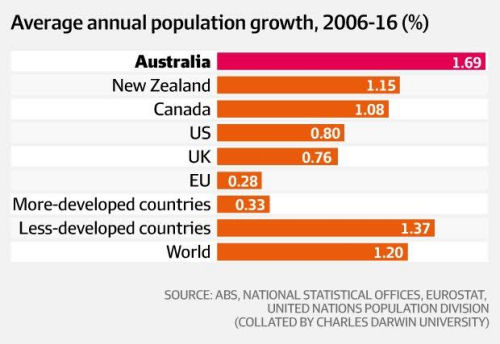 Australia's population growth has exceeded every other major developed nation over the last decade. Political & economic elites are flooding our country with immigrants for the purpose of lowering wages and increasing demand for real estate and headline GDP growth. Disgraceful. In Dick Smith’s words: We are conducting a risky experiment that has no parallel among developed nations, with a population growth rate that exceeds most developing countries.
Australia's population growth has exceeded every other major developed nation over the last decade. Political & economic elites are flooding our country with immigrants for the purpose of lowering wages and increasing demand for real estate and headline GDP growth. Disgraceful. In Dick Smith’s words: We are conducting a risky experiment that has no parallel among developed nations, with a population growth rate that exceeds most developing countries. 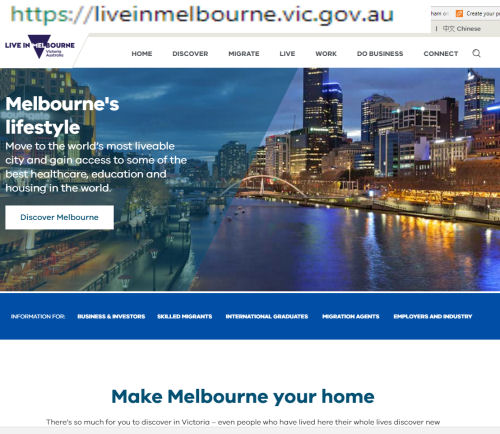
 "There are three aspects of the draft Exposure Bill that are of real concern: the first relating to the role of a council albeit its relationship to its community, the second the role of mayor and deputy mayor in their relationship to other councillors, and the third the electoral system and its relationship to its electors. [...] A duly elected city council should not be subservient to the State or proscribed a role that undermines the capacity of a council to engage with its community on a broad range of issues that impact on our lives. [...] The view that what is good for other levels of government should be replicated at the local level. This reinforces that local government is ‘government’ and not an administrative arm of the State." [Candobetter.net Editor: The state government is obviously trying to remove the capacity of residents to affect what happens in their local environment and suburb. We already have almost no democratic power at state or federal level - just reduced to a risible function of voting for Tweedledum or Tweedledumber. But local government is where it all happens. This is the first line of population policy, because the councils say whether there can be subdivision or new housing, which is what dictates population growth. VCAT has been used and abused by the State government to overturn council judgment, as has the insertion of State-paid Council CEOs. This attempt to rewrite the Act risks annihilating local governments in all but name. See also 'Population and Development Battlefronts' at the end of the statement by Fitzroy Council.]
"There are three aspects of the draft Exposure Bill that are of real concern: the first relating to the role of a council albeit its relationship to its community, the second the role of mayor and deputy mayor in their relationship to other councillors, and the third the electoral system and its relationship to its electors. [...] A duly elected city council should not be subservient to the State or proscribed a role that undermines the capacity of a council to engage with its community on a broad range of issues that impact on our lives. [...] The view that what is good for other levels of government should be replicated at the local level. This reinforces that local government is ‘government’ and not an administrative arm of the State." [Candobetter.net Editor: The state government is obviously trying to remove the capacity of residents to affect what happens in their local environment and suburb. We already have almost no democratic power at state or federal level - just reduced to a risible function of voting for Tweedledum or Tweedledumber. But local government is where it all happens. This is the first line of population policy, because the councils say whether there can be subdivision or new housing, which is what dictates population growth. VCAT has been used and abused by the State government to overturn council judgment, as has the insertion of State-paid Council CEOs. This attempt to rewrite the Act risks annihilating local governments in all but name. See also 'Population and Development Battlefronts' at the end of the statement by Fitzroy Council.]  To me the “Electoral Legislation Amendment (Electoral Funding and Disclosure Reform) Bill 2017” is more of the same – putting out a spot fire/diversionary tactic. The bill may be aimed at so-called charities that provide political advocacy while at the same time accommodating such advocacy through the back door, the bill may claim some smaller fry that are, to the government, collateral damage. Instead of addressing political donations head-on, we pathetically tinker around at the edges. As the dust settles the sharks that were dominating the pond are still there while the sardines have been thinned out!
To me the “Electoral Legislation Amendment (Electoral Funding and Disclosure Reform) Bill 2017” is more of the same – putting out a spot fire/diversionary tactic. The bill may be aimed at so-called charities that provide political advocacy while at the same time accommodating such advocacy through the back door, the bill may claim some smaller fry that are, to the government, collateral damage. Instead of addressing political donations head-on, we pathetically tinker around at the edges. As the dust settles the sharks that were dominating the pond are still there while the sardines have been thinned out!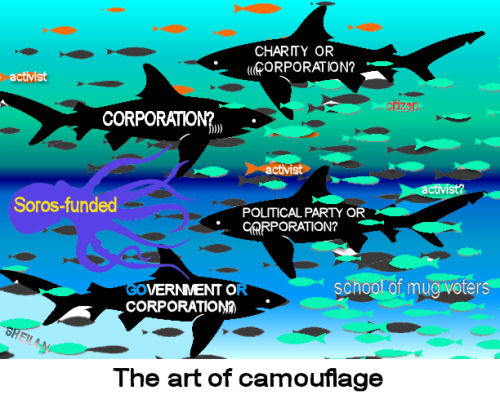
 “We are all an involuntary part of a social revolution, where political parties feel entitled to take ownership of our individual rights to real and personal property, and where our civil and political rights are abused and overridden by the many politically created entities within the Australian Government System.” (Larry Hannigan).
“We are all an involuntary part of a social revolution, where political parties feel entitled to take ownership of our individual rights to real and personal property, and where our civil and political rights are abused and overridden by the many politically created entities within the Australian Government System.” (Larry Hannigan).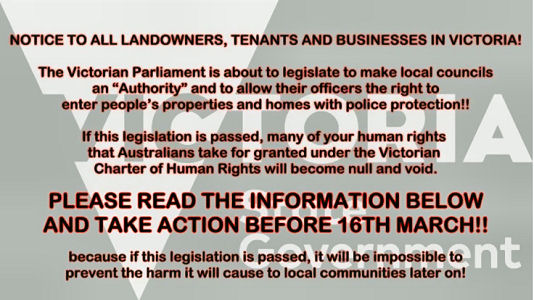
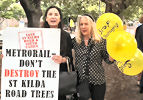 Yesterday between 1 and 1.30pm a rally was held to save the trees in St. Kilda Road destined for removal to make way for the new underground metro. It was organised by the combined forces of Planning Backlash, Protectors of Public Lands and Walk in St. Kilda Road and environs Approximately 80 people attended including the 9 speakers listed below. The M.C of the event was Mary Drost , Convenor of Planning backlash.Prof. Michael Buxton was unable to attend and Dr. Ernest Healy , Vice President of Protectors of Public Lands Victoria deputised by reading Prof. Buxton's speech. Feelings for the impending loss of ancient trees and for those already lost ran high. The general consensus from the speakers was that the damage envisaged for avenue of trees in Melbourne's beautiful boulevard, St. Kilda Road was not necessary to accommodate the project and that a better way must be found. A statement to this effect will be sent to Shadow Minister for Planning, to be read out in both houses of Parliament.
Yesterday between 1 and 1.30pm a rally was held to save the trees in St. Kilda Road destined for removal to make way for the new underground metro. It was organised by the combined forces of Planning Backlash, Protectors of Public Lands and Walk in St. Kilda Road and environs Approximately 80 people attended including the 9 speakers listed below. The M.C of the event was Mary Drost , Convenor of Planning backlash.Prof. Michael Buxton was unable to attend and Dr. Ernest Healy , Vice President of Protectors of Public Lands Victoria deputised by reading Prof. Buxton's speech. Feelings for the impending loss of ancient trees and for those already lost ran high. The general consensus from the speakers was that the damage envisaged for avenue of trees in Melbourne's beautiful boulevard, St. Kilda Road was not necessary to accommodate the project and that a better way must be found. A statement to this effect will be sent to Shadow Minister for Planning, to be read out in both houses of Parliament.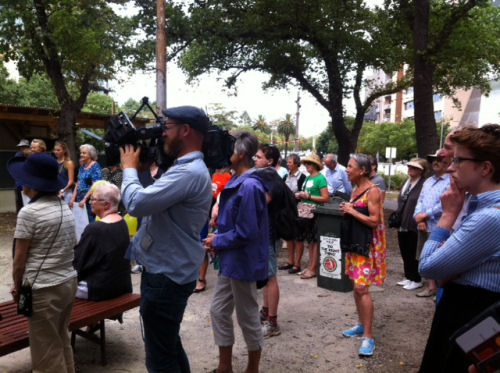

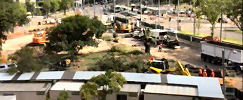
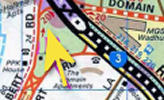 St Kilda Road, Melbourne's Champs Elysees, is being vandalised for population growth that we don't need, but big business is imposing. Join a public protest Wednesday 21 Feb 2018, 1pm-1.30pm. The meeting is now in the reserve which is outside 1 Albert Road. It’s a triangle of land in the fork of Albert Road. Some more details and yellow arrow on map inside.
St Kilda Road, Melbourne's Champs Elysees, is being vandalised for population growth that we don't need, but big business is imposing. Join a public protest Wednesday 21 Feb 2018, 1pm-1.30pm. The meeting is now in the reserve which is outside 1 Albert Road. It’s a triangle of land in the fork of Albert Road. Some more details and yellow arrow on map inside.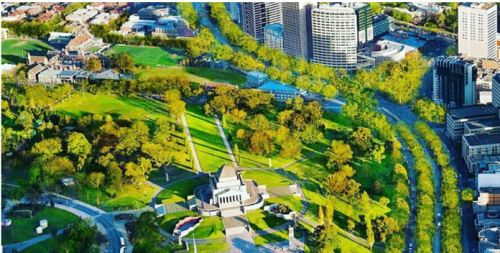
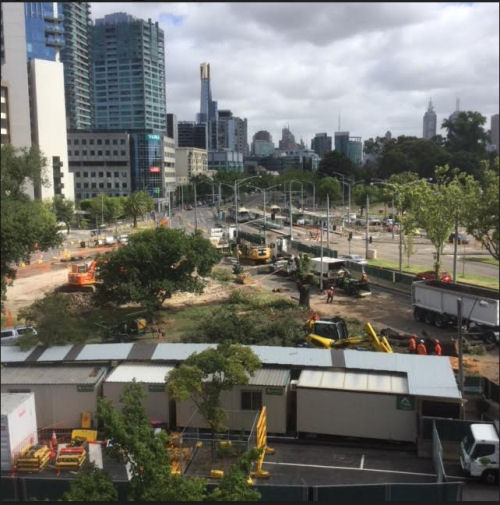
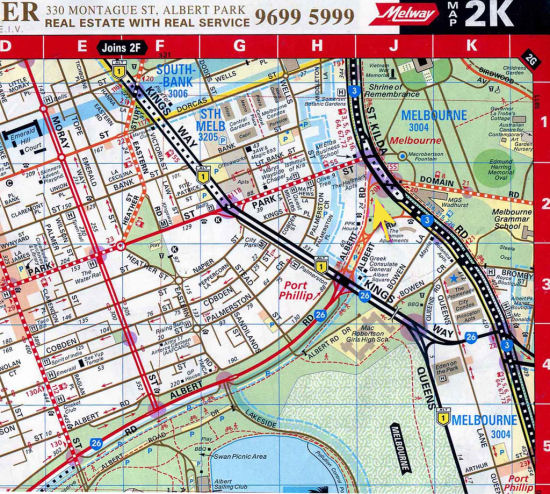

 [Candobetter.net Editor: This submission was made available as a pdf attachment to an
[Candobetter.net Editor: This submission was made available as a pdf attachment to an 
 The Australian Council of Trade Unions (ACTU) has unleashed on the revised Trans-Pacific Partnership (TPP) trade agreement (dubbed “TPP11”), which will reportedly allow employers unfettered access to ‘skilled’ migrant workers from member nations. From
The Australian Council of Trade Unions (ACTU) has unleashed on the revised Trans-Pacific Partnership (TPP) trade agreement (dubbed “TPP11”), which will reportedly allow employers unfettered access to ‘skilled’ migrant workers from member nations. From  "We cannot hide the fact that the European left has a clear agenda. They are supportive to migration. They actually import future leftist voters to Europe hiding behind humanism. It is an old trick but I do not understand why we have to accept it. They consider registration and protection of borders bureaucratic, nationalist and against human rights. They have a dream about the politically constructed world society without religious traditions, without borders, without nations. They attack core values of our European identity: family, nation, subsidiarity and responsibility. [...] We have a heartfelt compassion for the people who left their homes. They are victims of the bad governance of their own countries. They are victims of bad international political decisions. And they are victims of our bad European policy as well which raises expectations that are impossible to be fulfilled. They are obviously victims of the human traffickers. But considering them victims must not turn ourselves into being victims. Just because we do not consider them enemies we must not act against ourselves. Our moral responsibility is to give back these people their homes and their countries. It can’t be our objective to provide them with a new European life. Right to human dignity and security are basic rights. But neither the German, Austrian nor the Hungarian way of life is a basic right of all people on the Earth. " (Speech of Viktor Orbán at the EPP Congress in Madrid, on the 22nd of October in 2015 - more than ever, relevant today.)
"We cannot hide the fact that the European left has a clear agenda. They are supportive to migration. They actually import future leftist voters to Europe hiding behind humanism. It is an old trick but I do not understand why we have to accept it. They consider registration and protection of borders bureaucratic, nationalist and against human rights. They have a dream about the politically constructed world society without religious traditions, without borders, without nations. They attack core values of our European identity: family, nation, subsidiarity and responsibility. [...] We have a heartfelt compassion for the people who left their homes. They are victims of the bad governance of their own countries. They are victims of bad international political decisions. And they are victims of our bad European policy as well which raises expectations that are impossible to be fulfilled. They are obviously victims of the human traffickers. But considering them victims must not turn ourselves into being victims. Just because we do not consider them enemies we must not act against ourselves. Our moral responsibility is to give back these people their homes and their countries. It can’t be our objective to provide them with a new European life. Right to human dignity and security are basic rights. But neither the German, Austrian nor the Hungarian way of life is a basic right of all people on the Earth. " (Speech of Viktor Orbán at the EPP Congress in Madrid, on the 22nd of October in 2015 - more than ever, relevant today.) VicRoads recently closed down Hoddle Street for a week to work on streamlining the corridor. The project is expected to continue for the rest of 2018.
VicRoads recently closed down Hoddle Street for a week to work on streamlining the corridor. The project is expected to continue for the rest of 2018.
 "The proposed “Smart Planning” must not proceed in its current form. The Group does not support fast tracking development, weakening permit or planning triggers or referral requirements, or permit exemptions, or the removal of appeal rights." Inside find Port Campbell Community Group Inc's submission to the Victorian Planning Provisions Discussion Paper.
"The proposed “Smart Planning” must not proceed in its current form. The Group does not support fast tracking development, weakening permit or planning triggers or referral requirements, or permit exemptions, or the removal of appeal rights." Inside find Port Campbell Community Group Inc's submission to the Victorian Planning Provisions Discussion Paper.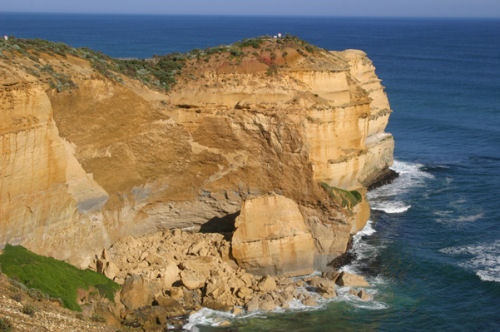
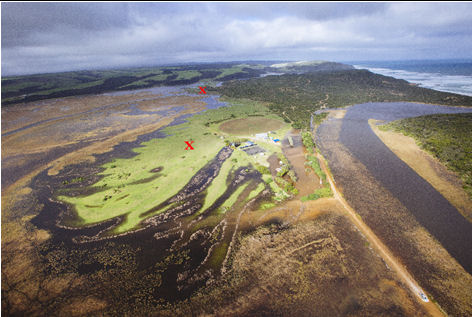

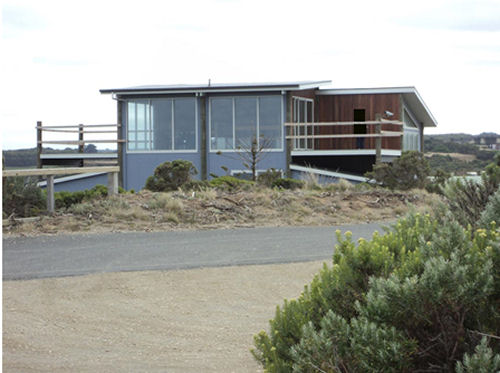
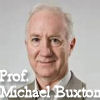
 "Labor is developing what is meant to be the most fundamental restructure of the Victorian planning system since the 1996 introduction of the Victoria Planning Provisions, the new Smart Planning program. [...] A simpler, more efficient and certain planning scheme is long overdue, but Smart Planning is not the way to provide it. This is a $25 million program managed through the Smart Planning program Rules team. If the system is simply to implement five minor changes, along with online access, then the program is a massive waste of money. Alternatively, if future stages are to radically change the system, then the government is hiding its intentions, locking out community groups from the process, and intends to present the public with a fait accompli." (Professor Michael Buxton*)
"Labor is developing what is meant to be the most fundamental restructure of the Victorian planning system since the 1996 introduction of the Victoria Planning Provisions, the new Smart Planning program. [...] A simpler, more efficient and certain planning scheme is long overdue, but Smart Planning is not the way to provide it. This is a $25 million program managed through the Smart Planning program Rules team. If the system is simply to implement five minor changes, along with online access, then the program is a massive waste of money. Alternatively, if future stages are to radically change the system, then the government is hiding its intentions, locking out community groups from the process, and intends to present the public with a fait accompli." (Professor Michael Buxton*) This is dismantling planning schemes, removing impediments to what developers want, and allowing development on developers’ terms. What is happening under “Smart Planning” has no relationship to either of those words. Read it and weep – or get angry, and loud. This is essentially about making a single planning scheme for Victoria, controlled by the State government (and whoever may have its ear). You are having YOUR planning scheme stolen from you.
This is dismantling planning schemes, removing impediments to what developers want, and allowing development on developers’ terms. What is happening under “Smart Planning” has no relationship to either of those words. Read it and weep – or get angry, and loud. This is essentially about making a single planning scheme for Victoria, controlled by the State government (and whoever may have its ear). You are having YOUR planning scheme stolen from you.  "The MEG Committee expresses its anger at the entire lack of contact between DELWP and residents’ groups such as ours. DELWP’s actions re the Discussion Paper seek to exclude residents from being informed of the proposed changes and from taking part in the decision-making process about the area in which we live." ..."VicSmart must not be broadened. It is quite clear that there is enough of the ‘fast tracking’ for so-called ‘simple’ planning applications. The Discussion Paper indicates that “the sky’s the limit.” When VicSmart was introduced the then Opposition (now the Government) vigorously opposed it saying that it really meant “the sky’s the limit” with regard to fast-tracking Planning Applications and this was to be deplored. The same Party (now in Government) has put aside such quibbles and enthusiastically adopted fast-tracking of applications and the Discussion Paper is mere tokenism."
"The MEG Committee expresses its anger at the entire lack of contact between DELWP and residents’ groups such as ours. DELWP’s actions re the Discussion Paper seek to exclude residents from being informed of the proposed changes and from taking part in the decision-making process about the area in which we live." ..."VicSmart must not be broadened. It is quite clear that there is enough of the ‘fast tracking’ for so-called ‘simple’ planning applications. The Discussion Paper indicates that “the sky’s the limit.” When VicSmart was introduced the then Opposition (now the Government) vigorously opposed it saying that it really meant “the sky’s the limit” with regard to fast-tracking Planning Applications and this was to be deplored. The same Party (now in Government) has put aside such quibbles and enthusiastically adopted fast-tracking of applications and the Discussion Paper is mere tokenism."  We need stronger not weaker planning controls at the level of local government and more community involvement. We need to empower local government and communities by ensuring that projects other than minor modifications to existing properties are scrutinized by council in consultation with the community. It might be more time consuming and cumbersome however it will be well worth the additional effort if we can avoid a planning disaster while at the same time achieving better planning outcomes. To achieve a good result, we need to give Councils the right to veto or modify a proposed development application and in the case of a disputed application that cannot be resolved at the level of local government, I would like to recommend that we replace VCAT by appointing a democratically elected community jury with the power to veto or modify a project. Overpopulation, planning and overdevelopment and building safe, attractive and cohesive communities will be the over-riding themes in the upcoming election campaign. Any further action in relation to the proposed changes should be deferred until we elect a new government in 2018 to allow the people to decide whether or not they support further deregulation and privatisation of the planning process and the removal of appeal rights. (A. Walker, Ashburton Residents Action Group)
We need stronger not weaker planning controls at the level of local government and more community involvement. We need to empower local government and communities by ensuring that projects other than minor modifications to existing properties are scrutinized by council in consultation with the community. It might be more time consuming and cumbersome however it will be well worth the additional effort if we can avoid a planning disaster while at the same time achieving better planning outcomes. To achieve a good result, we need to give Councils the right to veto or modify a proposed development application and in the case of a disputed application that cannot be resolved at the level of local government, I would like to recommend that we replace VCAT by appointing a democratically elected community jury with the power to veto or modify a project. Overpopulation, planning and overdevelopment and building safe, attractive and cohesive communities will be the over-riding themes in the upcoming election campaign. Any further action in relation to the proposed changes should be deferred until we elect a new government in 2018 to allow the people to decide whether or not they support further deregulation and privatisation of the planning process and the removal of appeal rights. (A. Walker, Ashburton Residents Action Group)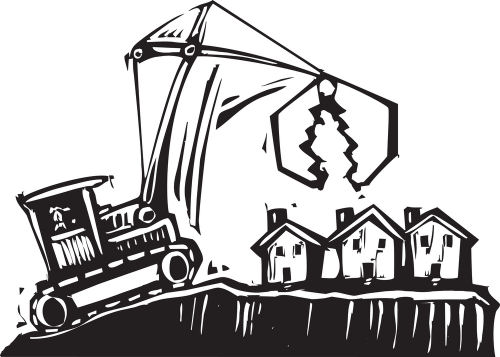
 "While Melbourne’s green wedges are generally considered to be a legacy of the 1972 – 1981 Rupert (Dick) Hamer State Government, they were established as part of the 1968 – 1971 Melbourne Metropolitan Board of Works planning process. They were protected by what was then called the Landscape Interest A zone, with a minimum lot size of twenty acres (eight hectares). For some thirty years, this zoning worked admirably. Then Melbourne started to experience growth pressure and the speculators moved in with their propensity to buy influence. The visionary Melbourne 2030 blue print for Melbourne and its rural fringe came under siege and has been slowly but relentlessly eroded by both sides of Government ever since." [...] "It is the role of councils and State Governments to provide sound, thoroughly researched, enforceable planning policies that support the big picture for the long-term future. It is absolutely critical to halt this tsunami of South Eastern suburban sprawl with its lack of supporting infrastructure, and to provide certainty to all stakeholders. Without such resolve, speculation will run rampant and uncontrolled ad hoc development will be the order of the day. Traffic to and from the area is already appalling well beyond the normally accepted peak hours. What are you thinking, putting exponentially more cars on these road networks that are not designed to take them? Casey is heading down a vortex of engineered chaos."
"While Melbourne’s green wedges are generally considered to be a legacy of the 1972 – 1981 Rupert (Dick) Hamer State Government, they were established as part of the 1968 – 1971 Melbourne Metropolitan Board of Works planning process. They were protected by what was then called the Landscape Interest A zone, with a minimum lot size of twenty acres (eight hectares). For some thirty years, this zoning worked admirably. Then Melbourne started to experience growth pressure and the speculators moved in with their propensity to buy influence. The visionary Melbourne 2030 blue print for Melbourne and its rural fringe came under siege and has been slowly but relentlessly eroded by both sides of Government ever since." [...] "It is the role of councils and State Governments to provide sound, thoroughly researched, enforceable planning policies that support the big picture for the long-term future. It is absolutely critical to halt this tsunami of South Eastern suburban sprawl with its lack of supporting infrastructure, and to provide certainty to all stakeholders. Without such resolve, speculation will run rampant and uncontrolled ad hoc development will be the order of the day. Traffic to and from the area is already appalling well beyond the normally accepted peak hours. What are you thinking, putting exponentially more cars on these road networks that are not designed to take them? Casey is heading down a vortex of engineered chaos."
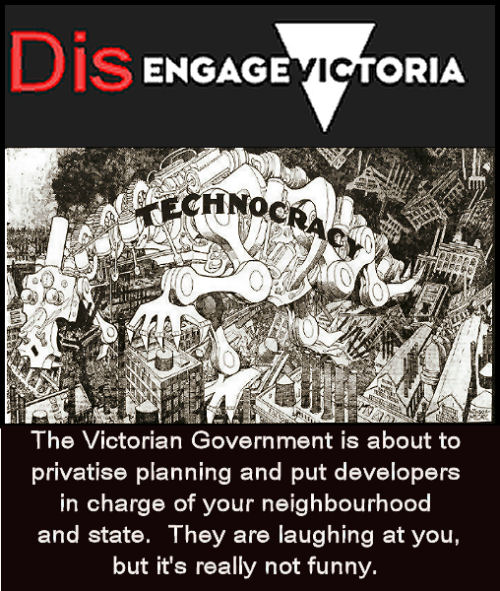
 We are embedding this show because it is educational. Mike Papantonio invites lawyers on each week to discuss major public interest cases, most of which have international impact. In this episode, Mike Papantonio reminds us of how media once had many diverse owners and actually sought to inform us. He and Holland Cooke discuss the looming mega-merger between media giants AT&T and Time Warner, which even the pro-business President Donald Trump has warned could be dangerous. Mike then talks with Brigida Santos about how some states are using artificial intelligence against criminals during sentencing. Then Farron Cousins, Executive Editor of the Trial Lawyer magazine, tells Mike about how Grubhub, along with other app-based companies, argue in court that the people whom they hire are not employees. The show was first published on November 9, 2017 at
We are embedding this show because it is educational. Mike Papantonio invites lawyers on each week to discuss major public interest cases, most of which have international impact. In this episode, Mike Papantonio reminds us of how media once had many diverse owners and actually sought to inform us. He and Holland Cooke discuss the looming mega-merger between media giants AT&T and Time Warner, which even the pro-business President Donald Trump has warned could be dangerous. Mike then talks with Brigida Santos about how some states are using artificial intelligence against criminals during sentencing. Then Farron Cousins, Executive Editor of the Trial Lawyer magazine, tells Mike about how Grubhub, along with other app-based companies, argue in court that the people whom they hire are not employees. The show was first published on November 9, 2017 at 
 Hungary’s Prime Minister Viktor Orban has apparently called on Hungarians to beware of the power of the Sith in his latest speech on migration crisis in Europe. He also declared Eastern and Central Europe the last ‘migrant-free zone.’ "We should never underestimate the power of the dark side," the prime minister said, referencing Star Wars as he referred to the plots of those behind the “migrant invasion,” adding that they “have no solid structure but extensive networks.” Article first published 23 October on RT with the title,
Hungary’s Prime Minister Viktor Orban has apparently called on Hungarians to beware of the power of the Sith in his latest speech on migration crisis in Europe. He also declared Eastern and Central Europe the last ‘migrant-free zone.’ "We should never underestimate the power of the dark side," the prime minister said, referencing Star Wars as he referred to the plots of those behind the “migrant invasion,” adding that they “have no solid structure but extensive networks.” Article first published 23 October on RT with the title,  With NSW’s (read Sydney’s) population growing at a break-neck pace (see below chart), last month it was revealed that there was a revolt underway from within the NSW Liberal Party against the federal government’s mass immigration program and over-development across Sydney (watch video).
With NSW’s (read Sydney’s) population growing at a break-neck pace (see below chart), last month it was revealed that there was a revolt underway from within the NSW Liberal Party against the federal government’s mass immigration program and over-development across Sydney (watch video).
Recent comments